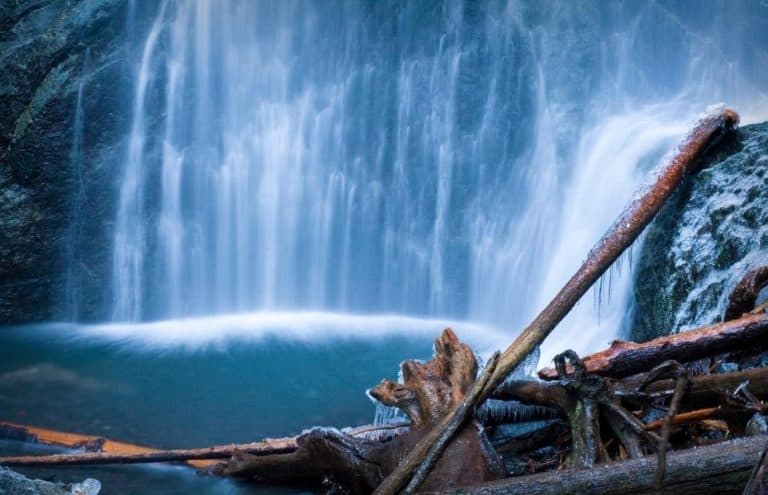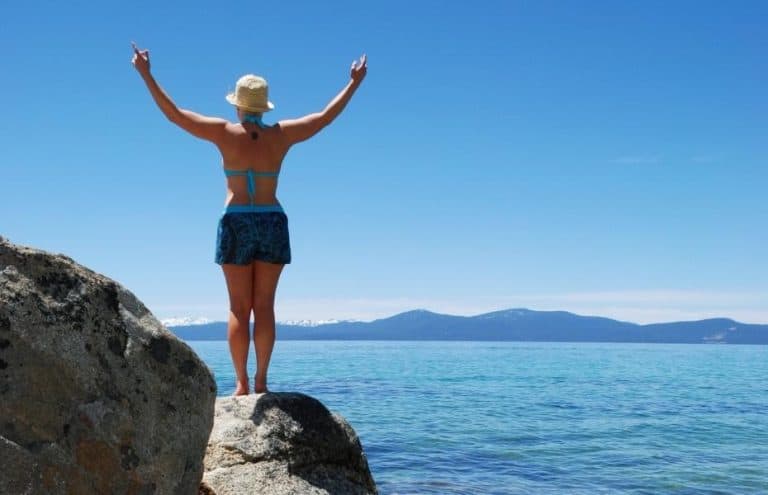This post contains affiliate links. If you click and purchase, we may earn a small referral fee at no extra cost to you. Read our full disclosure.
With more than three million lakes around the world, you’ll find plenty that could be considered strange, bizarre, crazy, unique or unusual lakes. Lakes exist in nearly every habitat, including deserts, rainforests and polar regions, and allow ecosystems to thrive.
Read on for our list of the 10 Most Unusual Lakes in the World.
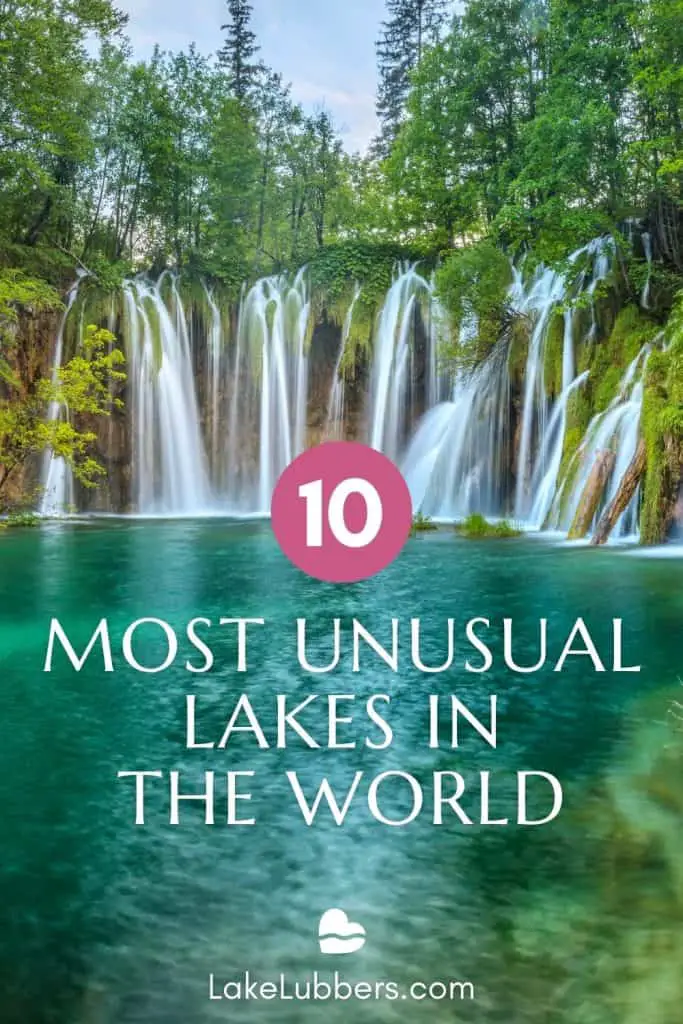
1 – Mountain Lake, Virginia
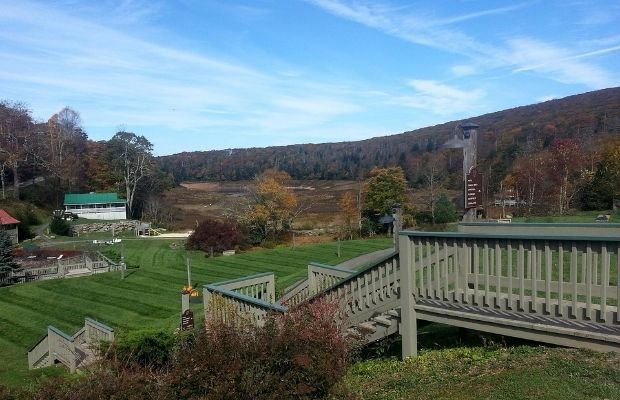
Lights, camera, action! Mountain Lake was the movie location for Kellerman’s Resort in the 1987 smash hit movie “Dirty Dancing” starring Jennifer Grey and Patrick Swayze.
However, nestled in the Blue Ridge Highlands of southwest Virginia, Mountain Lake is more like the 1980 movie “The Comeback Kid.” Geologists believe seismic activity created Mountain Lake about 6,000 years ago when a rock slide of sandstone boulders blocked a natural outlet for rain, ground water, and snow melt.
Over the intervening millennia, fault lines in the sandstone bottom opened and closed holes in the bottom of the lake. When opened, the lake drains in as little as two years; when closed and rainfall is optimal, the lake refills.
It is estimated that Mountain Lake has emptied and re-filled six times in the past 4,500 years. Despite water level changes, Mountain Lake has served as a mountain getaway since before the Civil War.
When the lake is full, visitors enjoy paddle boating, kayaking, and canoeing. Anglers reel in catches of rainbow trout and largemouth bass.
More than 22 miles of trails stretch around the 2,600-acre nature preserve, perfect for biking, hiking, and nature walks. In the winter, those trails become cross country ski trails.
Mountain Lake Lodge, originally built in 1851, continues to operate as an stately resort with rustic details and upscale amenities. Guests may enjoy an outdoor pool, a high ropes course, farm-to-table dining and immersive “Dirty Dancing” themed weekends throughout the year.
Discover other Virginia lakes

2 – Lake Waiau, Big Island, Hawaii
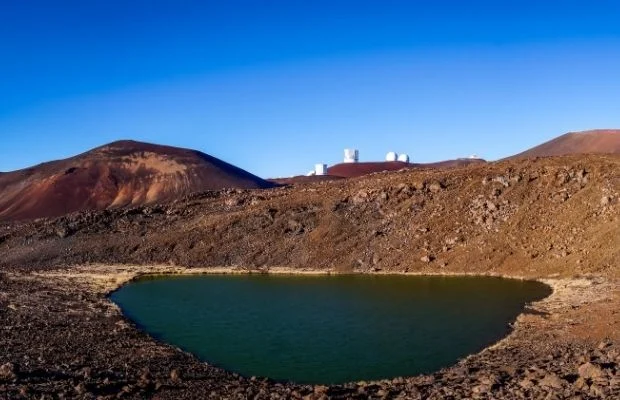
Visitors to Hawaii’s Big Island anticipate long stretches of beach and aquamarine water. But don’t overlook a most unusual geological phenomenon atop Mauna Kea, an inactive volcano reaching almost 14,000 feet above sea level. It’s one of the top astronomical sites in the world with several research facilities operating at its summit.
A drive up Mauna Kea to the observatories is an exciting day trip. About 800 feet below the summit, at 13,020 feet, is tiny Lake Waiau. It’s one of just a few small lakes in the state of Hawaii.
Despite its tropical location, Lake Waiau usually freezes during winter. Aside from rainwater and snowmelt, there is no apparent source of water inflow to Lake Waiau – no underwater spring, no river or creek.
Many scientists believe that Lake Waiau’s primary water source is permafrost, a thick layer of frozen soil that lies underneath the lake. The permafrost melts as needed to replace water that evaporates from Lake Waiau’s surface. If accurate, then Lake Waiau is the only “alpine lake” in the Hawaiian islands.
Lake Waiau is a 30-45 minute hike off the road that leads to Mauna Kea’s summit. Parking is provided near the path that leads to the lake. Because of the high elevation and a pebbled hiking surface, hiking from the parking area to the lake is relatively challenging. Pack a picnic lunch and enjoy the spectacular scenery. You’ll feel like you’re on top of the world!

Lake Waiau: a Remarkable Hawaiian Moonscape at 13,000 Feet
Measuring just two acres in surface area, tiny Lake Waiau is one of the highest elevated lakes on the planet. Located at 13,020 feet above sea level on the Big Island of…

3 – Draper Lake, Florida
Florida’s northwest coast is home to coastal dune lakes, very rare naturally occurring bodies of water and associated ecosystems found in just a few places on Earth. Draper Lake is one of 15 coastal dune lakes located near Topsail Hill State Park in Walton County.
It is neither purely freshwater nor saltwater. Its waters drain from the freshwater bodies to its north, filling the shallow Draper Lake basin.
Occasionally, the dune that holds the lake’s waters in place gives way, forcing the lake to drain rapidly into the ocean. The ocean’s saltwater pours back into the lake bed, changing the lake’s constitution from mostly freshwater to saltwater, and filling until the pressure evens out and stasis returns.
This process allows a very unusual kind of fresh- and saltwater habitat and ecosystem to develop in the area – one that supports a unique biodiversity. Most known coastal dune lakes have achieved protected status.
Draper Lake is a residential lake with abundant wildlife around its oak- and pine-covered shoreline. The beach at Draper Lake is connected to the white sand beaches of the Gulf of Mexico.

4 – Lake McKenzie, Australia
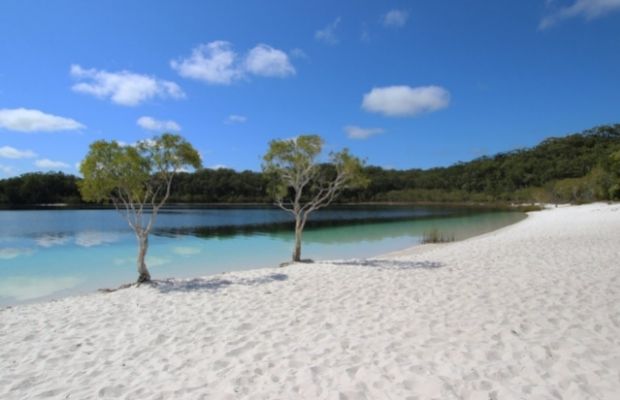
Located on Fraser Island off the coast of Queensland, Australia, Lake McKenzie’s crystal clear water and sparkling white sand combine to rank this lake’s beaches among the most beautiful in the world.
Fraser Island’s beauty continues through the display of numerous lakes, complex dune systems, multi-colored sand cliffs, and towering rain forests.
Lake McKenzie is a “perched lake,” formed when a wind-blown depression in the sand is rendered impermeable by the build-up of layer upon layer of decayed organic material. Of the few dozen perched lakes known to exist worldwide, Fraser Island holds about half of them.
Circling much of Fraser Island, the Great Walk offers visitors a unique opportunity to view scenery and wildlife along a 56 mile (90 kilometer) walking trail. The entire walk can take six to eight days to complete as it passes by Lake McKenzie, ocean beaches, shipwreck remains, and native wildlife habitat.
The Great Barrier Reef Marine Park, listed as one of the seven natural wonders of the world, lies off the northern end of Fraser Island.
Access to Fraser Island is by ferry. Visitors select accommodations amid the trees, dunes and beaches on an island so extraordinary it was named K’gari – Paradise – by the Aboriginal people.

5 – Plitvice Lakes, Croatia
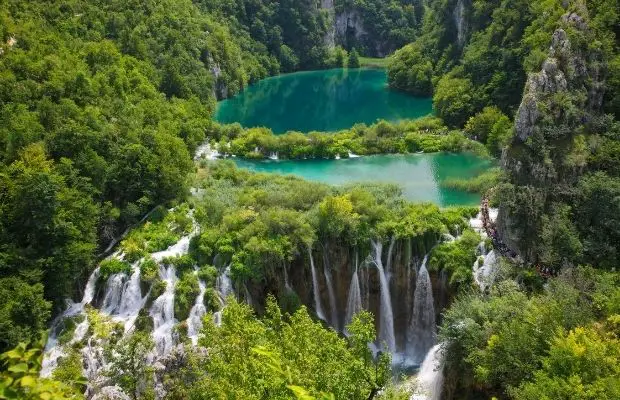
Cascading waterfalls and tucked-away caves surrounded by lush green forests – the Plitvice Lakes are a wonder to behold.
The karst topography of the Plitvice Lakes was created over thousands of years, as flowing mountain waters carved formations in the dolomite and limestone rock.
The Plitvice chain includes 16 lakes ranging in elevation from 636 meters (2,087 feet) to 503 meters (1,650) above sea level. Natural travertine dams separate the lakes and create a series of cascading waterfalls along the drop in elevation.
The Plitvice Lakes are renowned for their changeable colors, including azure blue, aquamarine, and green. The colors depend on each lake’s minerals, organisms in the water, and the angle of sunlight.
Today the lakes are contained within the Plitvice Lakes National Park, one of Croatia’s most popular tourist attractions. The national park was added to the UNESCO’S World Heritage list in 1979 due to its intense beauty.
Visitors can soak in the beauty of the area by walking the trails along the shoreline and through the forest, by boat tour, or by tourist train.

6 – Lake Melissani, Greece
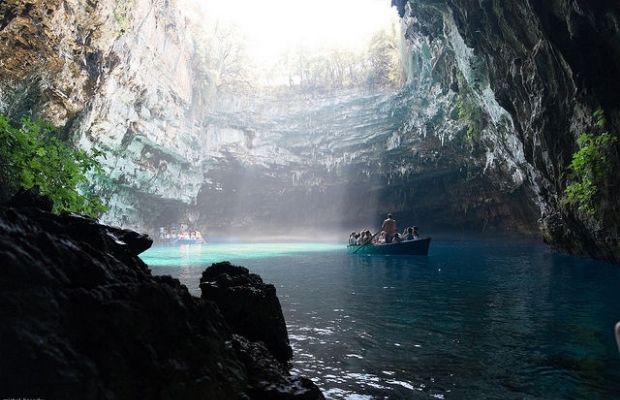
The Greek island of Kefalonia, also known as Cephalonia, is an island with many caves. Tucked underground in a massive cave is Lake Melissani or Melissani Cave.
Although ancient Greeks were familiar with this underground lake, evidenced from archeological findings, the cave was not rediscovered until 1951; it was opened to the public in 1963.
Melissani Lake is named after mythical Melissanthi, the Greek nymph who drowned herself in the lake when the god Panas rejected her love.
Today, visitors descend into the cave where guided rowboats take them across the lake. The boats, with their charming and sometimes even singing boatmen, are the only way to tour Lake Melissani.
It is recommended that tourists visit on a sunny day so they can enjoy the full effect of the light streaming through the hole in the ceiling of the first hall of the cave, turning the water to aquamarine colors.
The channel that connects the two halls is too narrow for the boatmen to row through, so they pull the rowboats through by rope. On the other side, the ceiling opens to a dome, with the cave decorated in stalactites and stalagmites.
Kefalonia, the largest of the Ionian Islands, offers visitors a rich history, beautiful scenery, and sand and pebble beaches.
Lake Melissani is the glowing underground gem tucked away in this exceptional Greek getaway.

7 – Lake Vostok, Antarctica
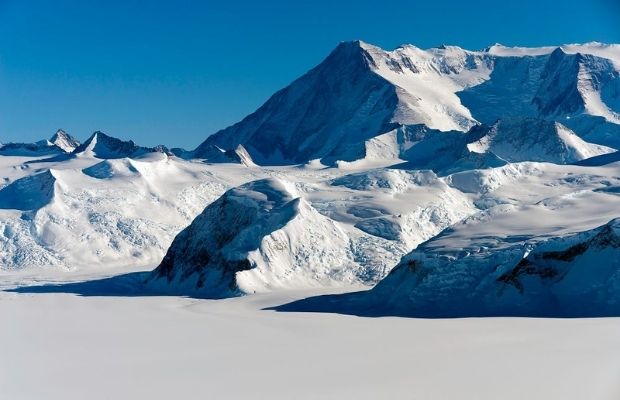
Where in the world is Lake Vostok? One of the world’s largest lakes is virtually unknown; it was discovered in 1996.
Lake Vostok, estimated to be the approximate size of Lake Ontario, is still being explored from a distance. This huge natural marvel is located beneath more than two miles of ice and was discovered because ice core samples collected by Russian scientists were not consistent with Antarctic saltwater ice.
Lake Vostok is a freshwater lake that remains liquid because the water is pressurized by the immense weight of the ice above, lowering the freeze temperature to 30 degrees Fahrenheit (-1 degree Celsius).
Residual heat from the earth’s core adds the few precious degrees needed to keep the water from freezing. Scientists speculate that Lake Vostok has been isolated from Earth’s atmosphere for two million years – an environment uncontaminated by recent global history.
Because these conditions may closely resemble those of the frozen subterranean lakes on Jupiter’s moon Europa, scientists hope that Lake Vostok will provide valuable information about environments in which life may exist beyond Earth.
Although Antarctica tours have grown in popularity, they do not approach scientific research stations. Instead, tours concentrate on the wildlife viewing opportunities in the oceans around Antarctica which include six species of seals, 35 kinds of seabirds and 17 species of penguins.

8 – Pitch Lake, Trinidad
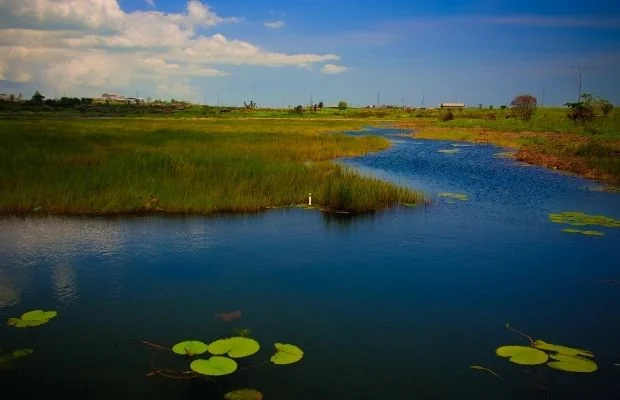
Another lake that may contain clues about life beyond Earth’s atmosphere is Lake Pitch, Trinidad.
The conditions found in this southern Caribbean lake are similar to the hydrocarbon seas of Titan, Saturn’s largest moon, leading researchers to speculate on the possibility of life beyond our planet.
Although guided tours of Lake Pitch make a unique excursion on a Trinidad vacation, visitors do not swim, boat, or fish in the lake. That’s because the entire lake is a pool of asphalt.
Scientists speculate that the lake lies at the junction of two fault lines which allows oil to seep upward to the surface. Surprisingly, the pool of asphalt is teeming with microscopic life that lives without water and in limited oxygen – similar to the conditions on Titan.
At 114 acres, Pitch Lake is the largest of its kind in the world. Some areas of the oozing pond are firm enough to walk on; other areas are quite soft and unsafe. Several long-established areas hold rainwater pools large enough to support bird life and pond plants.
Ancient trees occasionally rise from the depths before sinking out of sight again, leaving tantalizing hints of the secrets this lake may hold.
Visitors are advised to engage the services of a guide who knows the pool, as it isn’t always easy to tell where the surface is solid enough to bear weight.

9 – Lake Manyara, Tanzania
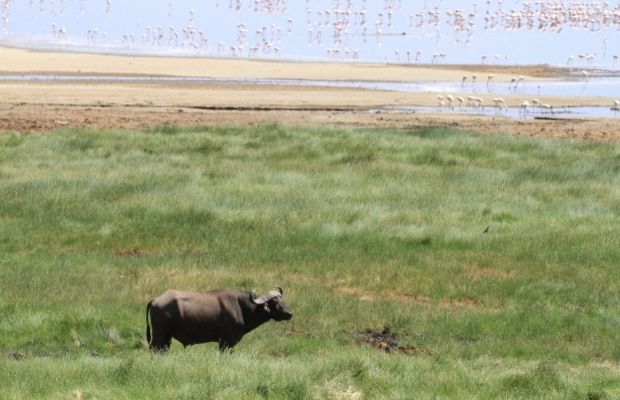
Is Lake Manyara a freshwater lake or a saltwater lake? The answer depends on the time of year.
This stunning lake and surrounding landscape are the setting that inspired Ernest Hemingway to write his novel, “Green Hills of Africa,” after he spent a month there in 1933.
Formed about three million years ago, Lake Manyara’s water levels fluctuate greatly between the rainy and dry seasons.
When full during rainy seasons, the freshwater lake approaches 57,000 acres. As water evaporates during dry seasons, salt and other minerals accumulate, making the water increasingly brackish – and giving the lake a silvery appearance.
The lake takes on a new life during dry seasons as the exposed lands sprout tender grasses that attract grazing wildlife. During periods of extended drought, the lake may be only knee deep.
Lake Manyara is two-thirds of the Lake Manyara National Park, a World Biosphere Reserve. The reserve protects elephant herds from poachers; it is also famous for the tree-climbing lions that can be seen sprawled across the limbs of acacia trees.
In addition to lions and elephants, the park is home to leopards, buffalo, giraffes, zebras, hippos, hyenas, wildebeest, baboons, and blue monkey, all of which come to the lake’s shore to drink the water regardless of its saltiness.
With the lake’s unique freshwater to saltwater cycles, it attracts both freshwater and saltwater species of birds. 400 species of birds can be seen in this birdwatchers’ paradise, including seven species of vulture, twelve species of eagle, five species of owl, flamingos, pelicans, storks, waterfowl and migratory birds.

10 – Lake Piediluco, Italy
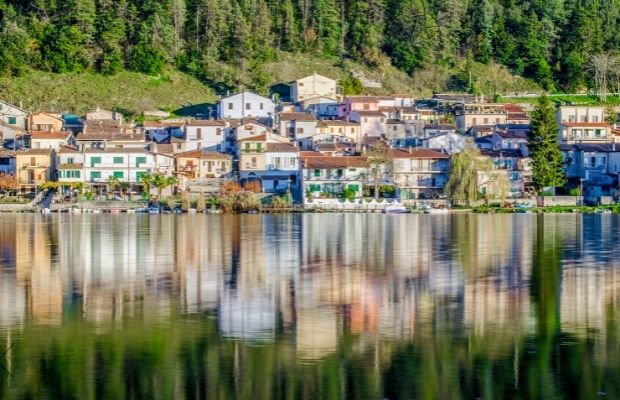
Lake Piediluco, located in the Umbria region of central Italy, is a prime example of nature made even more spectacular through human ingenuity.
One major attraction luring visitors to Lake Piediluco is Marmore Falls (Cascata della Marmore), one of the tallest man-made waterfalls in Europe.
Divided into three cascades, the falls drop a total of 541 feet. The ancient Romans created Marmore Falls in 271 B.C. by building a canal to divert stagnant waters from the Velino River into the natural cliff at Marmore, cascading into the Nera River gorge below.
Since the early 1900s, Lake Piediluco has been used to generate hydropower. The lake receives water from both the Velino and Nera Rivers through artificial channels, where it is stored until released over the falls, generating electricity through the Galleto power plant.
Tourists wait each afternoon for the gates to open, to see and hear the powerful rush of water over the falls into the gorge below.
Because the river valley below Marmore Falls goes from a trickling stream to a gushing river, water sport enthusiasts anticipate these water releases from Lake Piediluco. White-water rafting, kayaking and hydrospeeding, a type of high-adrenaline rafting using only a body-board, are just a few of the sports people enjoy during their visit.
Every year, Italy’s national rowing team comes to train at Lago di Piediluco, which translated means the lake at the foot of the mountain.

Top 9 Most Beautiful Lakes in the World
What are the world’s most beautiful lakes? With so many stunning lakes around the globe, creating this list wasn’t easy. However, our choices all have something in common: Each offers panoramic lake…


